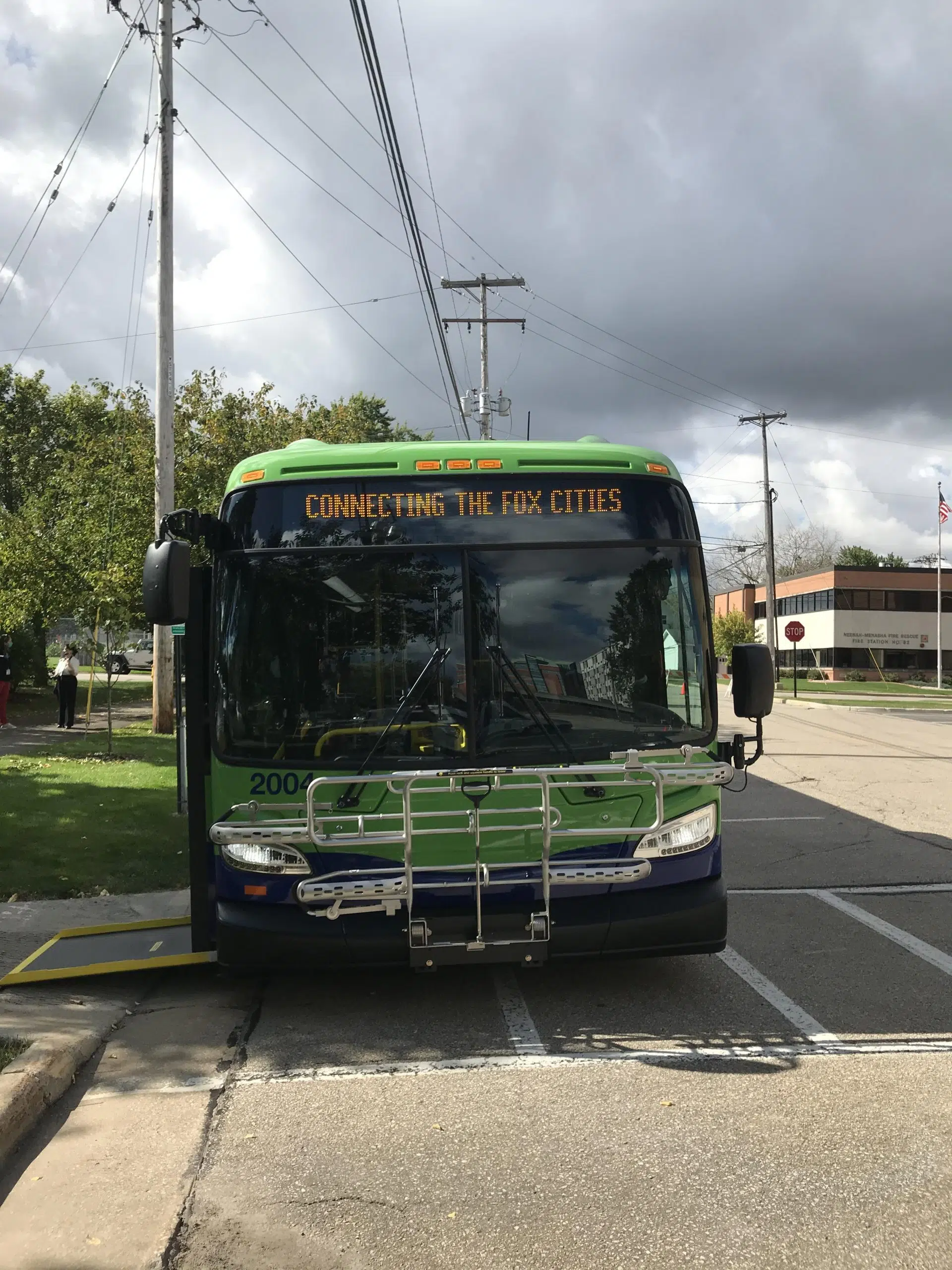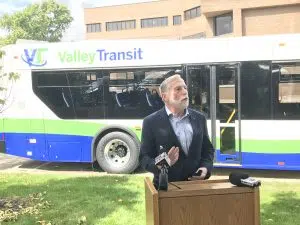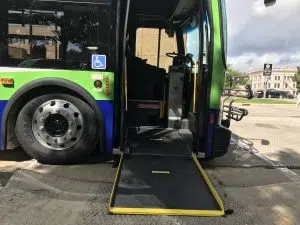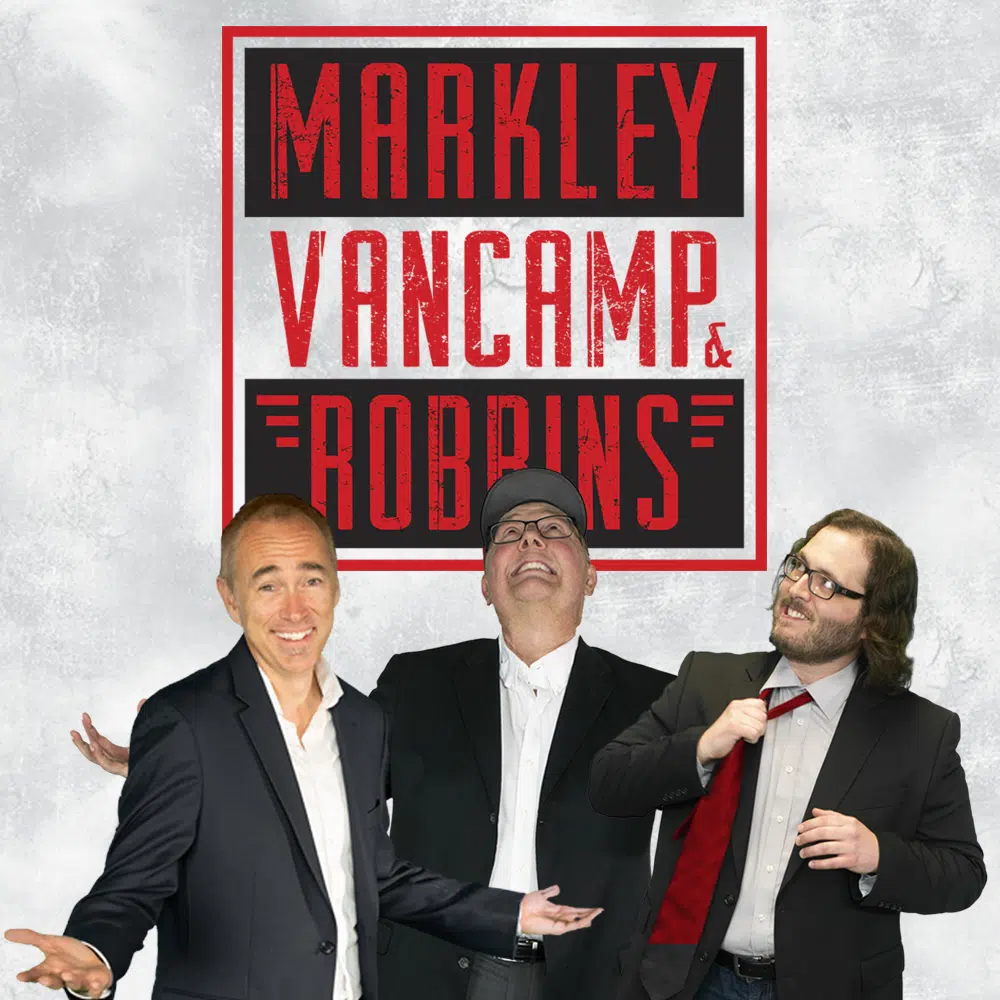
Valley Transit introduced five new buses to the fleet during an announcement at Neenah City Hall, September 17, 2020. (PHOTO/WTAQ News)
NEENAH, WI (WTAQ) – Valley Transit is introducing five new buses to their fleet at no cost to taxpayers in the Fox Cities. They unveiled the first of the new crew at Neenah City Hall on Thursday morning.
These buses, and more to be brought into the lineup later on, are being funded through money from the Volkswagen diesel emissions settlement. The German vehicle manufacturer is paying $2.9 billion after admitting to violating the federal Clean Air Act from 2009-2016 by using software on vehicles that would report inaccurate data on nitrogen oxide emissions.
“Often the projects we take on just have to come from local tax dollars, but in this case, we’re able to leverage grant money that came from the Volkswagen settlement so it doesn’t affect the bottom line for taxpayers in our communities,” said Appleton Mayor Jake Woodford. “We’ll actually have the opportunity to upgrade the entire fleet with the settlement dollars. It’s being staggered over a number of years to make sure that we’re not bringing all new buses online at the same time so that as buses age out they can move around in the fleet.”
“This is a godsend for us financially,” said Neenah Mayor Dean Kaufert. “It’s exciting because otherwise, Valley Transit themselves would have to expend these dollars, and then the share that the communities all chip in to make the system work would have to go up.”
“Our budget for 2021 is a zero-percent increase, so we’ve used some of those savings to help us continue operations without having to increase our budget,” said Valley Transit General Manager Ron McDonald.
Valley Transit services cross city lines and provide transportation for people all over the Fox Cities, from Neenah to Appleton to Grand Chute and Kimberly.
“Getting people to their jobs, appointments, social events – they don’t stop and Nicolet Boulevard. We are all a regional system and that’s what helps connect the Fox Cities,” said Representative Mike Rohrkaste of Neenah.

State Representative Mike Rohrkaste of Neenah speaks during the announcement of new Valley Transit buses made possible through the Volkswagen emissions settlement. (PHOTO/WTAQ News)
Rohrkaste also played a major role in acquiring the funding, which was about $67.1 million in total for the state of Wisconsin.
“When we had this opportunity to take this money that was coming into the state we had to figure out what’s the best way that we could spend it and that’s a lot of money,” Rohrkaste said. “We wisely spent money in a high need area for helping multiple groups of constituents young to senior citizens…You’ve got to fix problems and you’ve got to allocate your resources where you’re going to provide the best services on the best support for the families of Wisconsin.”
The new buses aren’t just repeats of the same old thing either. They’re a bit easier to look at and make the current models virtually technologically obsolete.
“These new buses reduce emissions compared to the old buses by 92-percent, so we’re for excited about that aspect of it – but also just making sure that we have an updated fleet that’s reliable,” said Woodford. “It stands to open up the system to a lot more people. The buses are more comfortable, they’re nicer, it feels like a service that people could use even if it was for nonessential service as just as another option to get around.”
The new buses also have the ability to ‘kneel,’ which drops the front end to make it easier to board – or easier for the driver to drop a ramp for those with wheelchairs or mobility scooters. Those people also have new technology to fasten themselves on the bus.
“[It’s] called a Quantum. It’s an independent securement system for people with mobilities. The passenger can get on the bus if they’re in a wheelchair or scooter or something like that,” McDonald explained. “They get on the bus, they pull in there, they simply hit a button and the securement system comes down and squeezes the wheels and locks it into place independently.”

New Valley Transit buses are easier to access with ramps and ‘kneeling’ hydraulic systems. (PHOTO/WTAQ News)
McDonald points out that having those passengers be able to secure themselves also helps with a comfort level, as they won’t need as much help from the driver – or have a driver invade their personal space to strap them in.
But the upgrades aren’t just for one group of people. Everyone who rides buses on a regular basis will see a major difference.
“Valley Transit has a bus tracking app. We ask people to use their phones, so we’ve given them an opportunity to be able to charge while they’re on the bus if they have their cord with them. There’s a charger right underneath the seat they can plug into it and charge up,” McDonald said.
Those seats, by the way, are padded for a more comfortable ride.
“We have so many bicyclists using the system that we had to go to a three-position bike rack, we didn’t have enough capacity with two,” McDonald told WTAQ News. “The passenger can come up to the front of the bus if they have their bicycle, they simply pull the rack down, they can set their bike up in there – it just gets hooked on the tire, it gets locked in, and they get on the bus and go.”
Meanwhile, Green Bay Metro plans to buy four new buses with its money from the settlement.





Comments